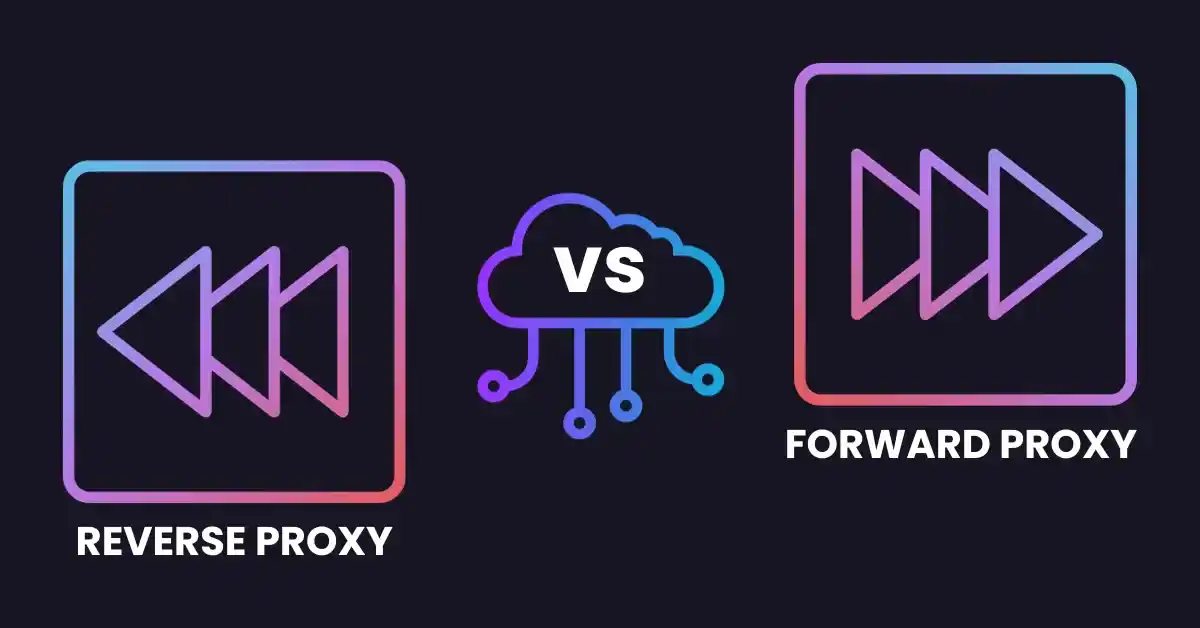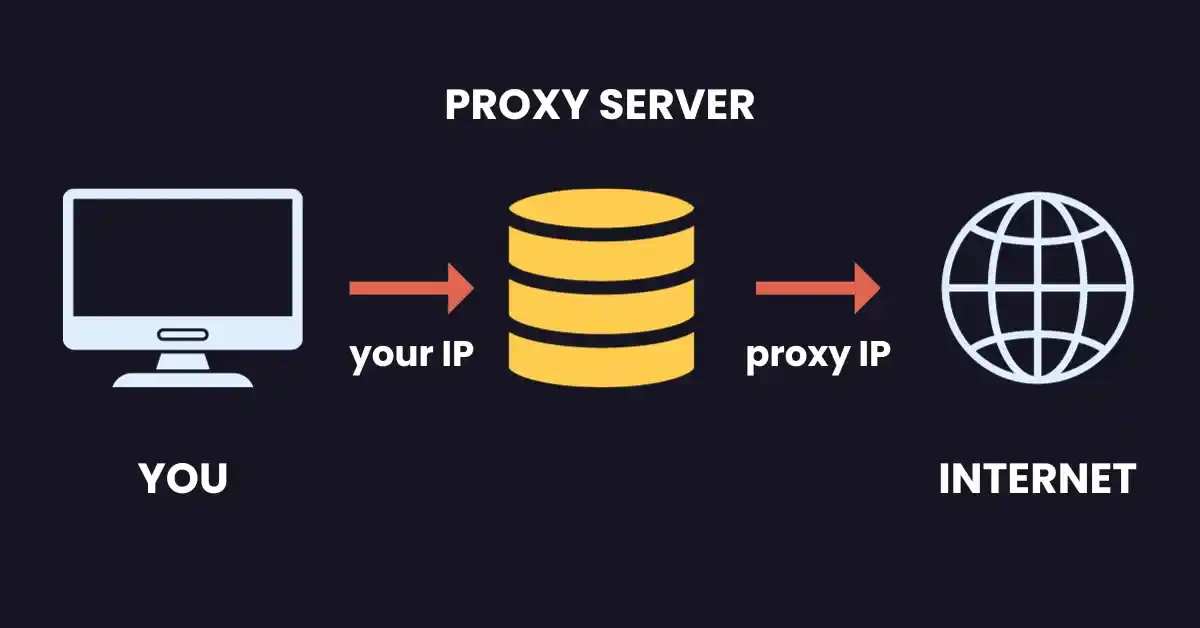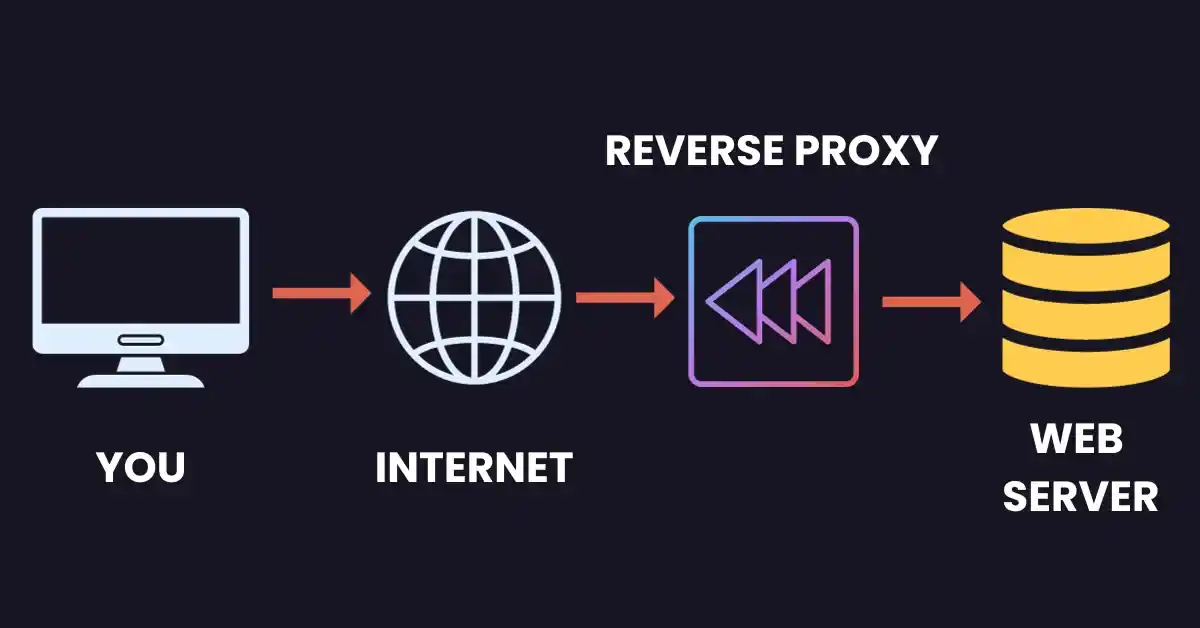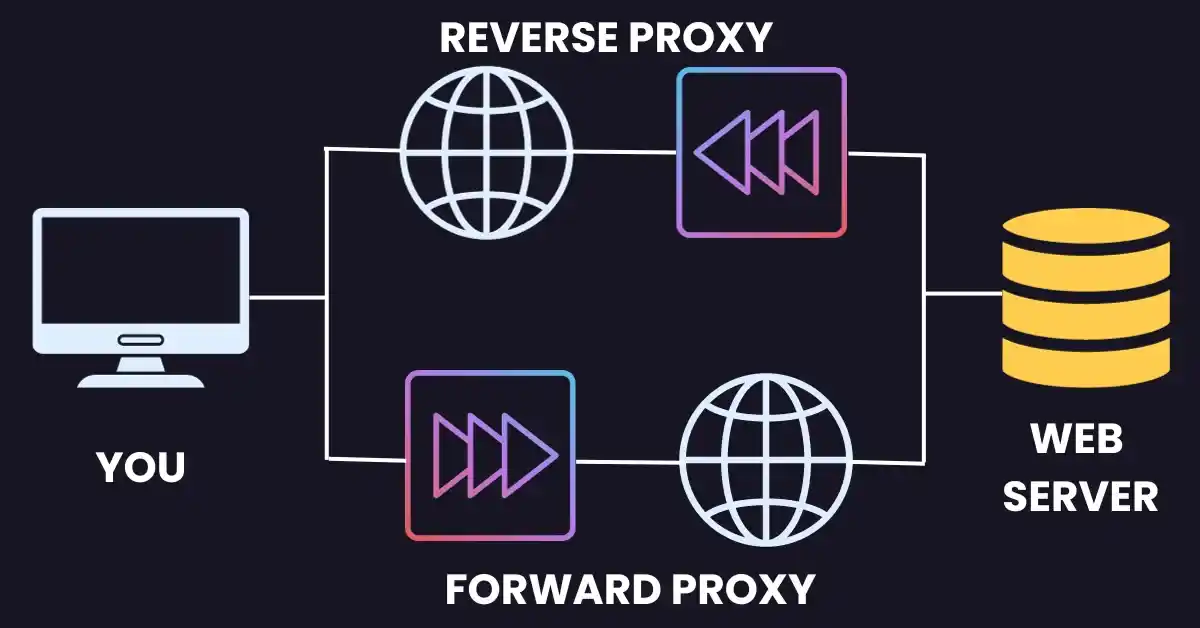A proxy server is a computer that sits between your device and the Internet and provides a means of communication. There are two main types of proxies: reverse and forward. Each type has its advantages and disadvantages. In this blog post, we’ll take a look at the differences between reverse proxy vs forward proxy.

What is a Forward Proxy?
When someone talks about a proxy server, they typically mean the most popular kind of proxy, which is a forward proxy. Between users and the web servers they access, this proxy sits in front of the user and serves as a middleman. It indicates that the user’s request first passes via the forward proxy before it is forwarded to the website.
After being retrieved from the internet, the data is forwarded to the proxy server, which then sends it back to the original requester. The request is made by the proxy server, not the user, in the eyes of the internet server. A forward proxy can also store data and utilize it to handle incoming requests in the future.
A forward proxy can improve user security within a private network, control traffic, and provide anonymity by hiding the source IP address because it can be viewed as a point of access and control.

Forward proxy types
There is a wide variety of forward proxies available. The most well-known are arranged in groups according to the country of origin of their initial popularity. There are two main categories of proxies in this case: residential and datacenter.
1. Residential proxies: An Internet Service Provider (ISP) with a physical address provides these proxies with actual IP addresses.
2. Datacenter proxies: Because IP addresses originate from secondary sources like data centers, this form of proxy is not connected to an ISP. Datacenter proxies can be shared or dedicated.
Use Cases of Forward Proxies
Forward proxy servers are used by organizations and lone users for a variety of reasons, including:
1. Access geo-restricted content: Forward proxy servers may be useful for gaining access to geographically restricted content. Internet users typically view content tailored to their location when they are exploring the web. Users can access a range of content meant for other nations while utilizing a forward proxy. For businesses that offer ad verification services, for instance, this is particularly helpful. No matter where the advertisements are located, these companies can monitor them.
A Brazil proxy, for instance, would be used to access content in Brazil, and a German proxy, to access content in Germany.
2. Maintaining privacy: A forward proxy server serves as an additional layer of protection by using its IP address to mask the web server’s actual IP address. Because of this, using forward proxy servers guarantees greater degrees of security and anonymity.
3. Web harvesting: Web scraping is the most frequent application for proxies. Typically, businesses collect data to enhance their pricing, marketing, and other business activities. Web scraping aids businesses in maintaining market competitiveness.
What is a Reverse Proxy?
As the name implies, a reverse proxy server sits in front of backend servers and routes client requests there, as opposed to a forward proxy, which acts on behalf of clients. In general, reverse proxies are used to increase security, speed, and dependability. A reverse proxy receives a request from a client, forwards it to another server, and then returns it to the client, giving the impression that the first proxy server handled the request. These proxies ensure that users don’t access the origin server directly, giving the web server anonymity.
Reverse proxy servers are ideal for service providers and websites with high daily visitor counts, but they are of little use to consumers and everyday users. These proxies can safeguard web servers, improve the functionality of websites, and prevent overloading. Additionally, load balancing, caching, and SSL encryption are performed through reverse proxies.

Reverse Proxy types
All reverse proxies perform essentially the same functions. However, based on these qualities, we may distinguish between two major categories of reverse proxies. They are load balancers as well as standard reverse proxies.
1. Regular: This kind of proxy intercepts a client’s request, delivers it to the server for processing, and then sends it right back to the client. The primary usage of this proxy type is security.
2. Load Balancers: This proxy is a subtype of reverse proxy that connects to more than one backend instance. It can manage client-server communication amongst all of the other servers and distribute the traffic among them. This type is more purposefully designed to evenly transfer the load among many servers, hence enhancing speed and performance.
Use Cases of Reverse Proxies
Reverse proxies are used by websites and service providers for a variety of purposes.
1. Load balancing: Reverse proxy servers may occasionally be required to handle the influx of inbound traffic on frequently accessed websites. A popular website may split the traffic between numerous back-end servers rather than handle it all on its own, increasing its ability to handle a large number of requests. Traffic can be diverted to other online servers to keep the website running if one of the servers is overwhelmed and out of commission. To enhance capacity and handle the increasing demand for performance, the website engineers may even add more back-end servers to this load balancer.
2. Caching: A reverse proxy can cache frequently requested data. By caching this content and lowering the demand on the internet servers, companies that save a lot of images and videos can also improve the speed of their websites.
3. Security and anonymity: Reverse proxies act as an extra layer of security for backend servers because they block all incoming requests. Restricting suspicious traffic from particular IP addresses helps stop any malicious actors from misusing web servers.
Differences Between A Reverse Proxy Vs Forward Proxy

A forward proxy is used by a client, such as a user inside a private network, whereas a reverse proxy is used by an internet server. This is the primary distinction between the two. A forward proxy may be physically present in the user’s private network or it may be online.
Another distinction between these two categories of proxies has to do with how they are used. We’ve already mentioned a few of the most typical uses for each sort of proxy. Forward proxies are used for a variety of purposes, including online scraping, accessing geo-restricted material, and privacy. Reverse proxies are used by web servers to prevent overloading, offer additional security layers against malicious entities, cache content, encrypt SSL, and other functions.
The primary distinction between these proxies is that they are utilized for fundamentally different activities.
Can a forward proxy also function as a reverse proxy?
To put it plainly, a proxy server that normally acts as a forward proxy cannot also act as a reverse proxy. As we have seen, these proxies have a wide range of applications despite sharing conceptual similarities.
An IP address is not all that a proxy is by itself. Proxies are made up of IP addresses and specific software that enables them to function as intended. Both forward and reverse proxies require distinct software to operate properly because they are used for various activities. Because of this, forward proxies cannot be used as reverse proxies.
Conclusion
In short, a reverse proxy sits in front of your web server and forwards requests to it, while a forward proxy caches static content and sends all other requests to the origin server. Reverse proxies are generally used for security purposes, such as hiding the true identity of your web server or protecting it from DDoS attacks, while forward proxies can improve performance by caching static content.
